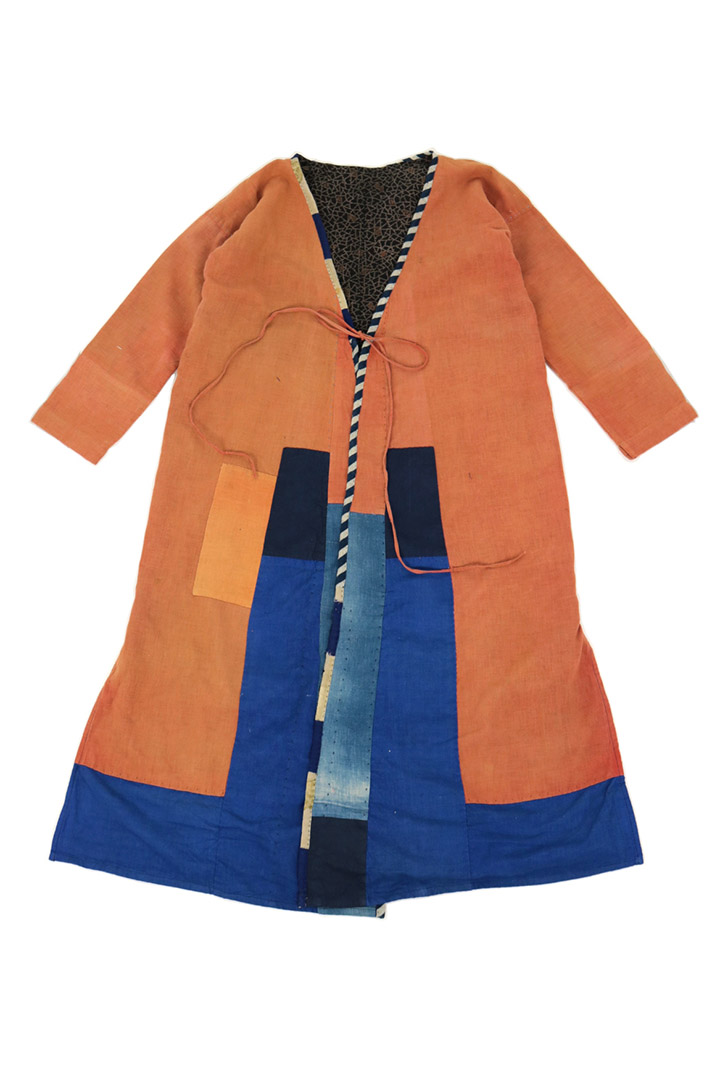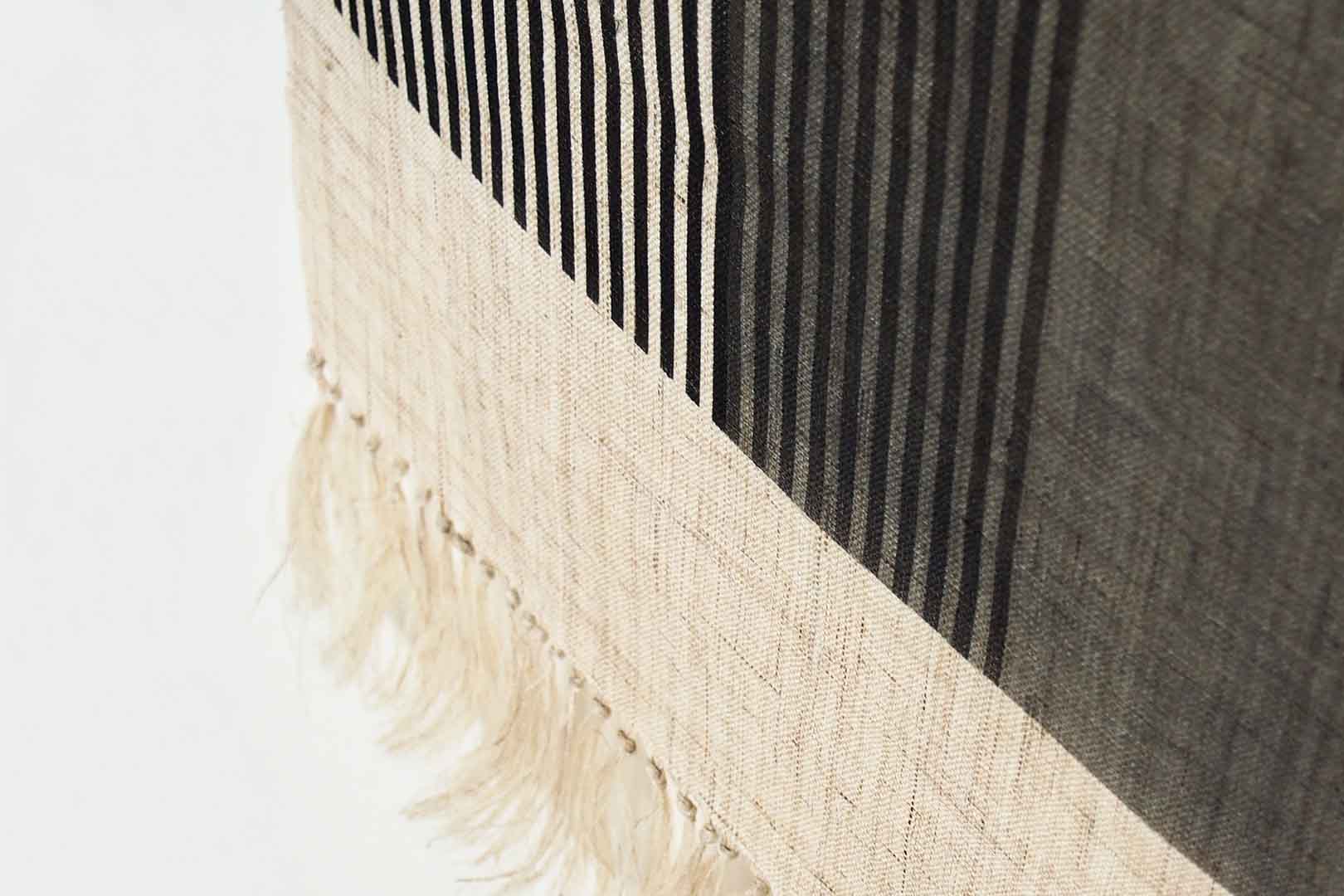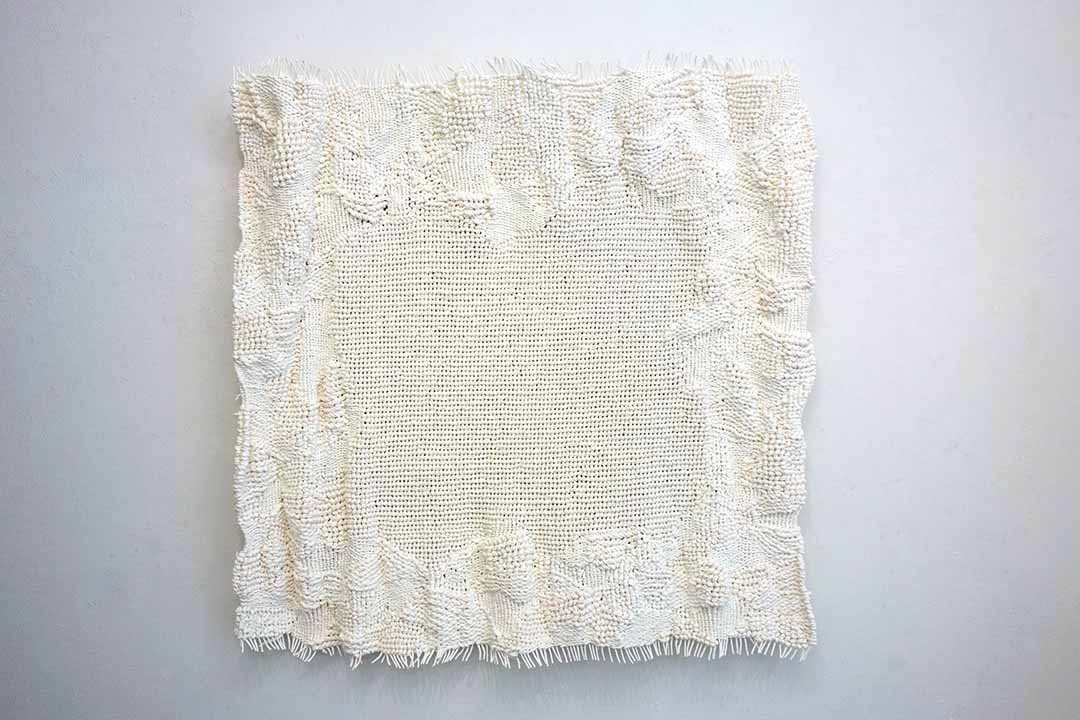
Media Release
For Immediate Release | July 26, 2018
The Intuitive Thread
The Japan Foundation, Sydney presents The Intuitive Thread, an exhibition featuring works by four textile artists from Japan. Their practices remain grounded in slow, disciplined age-old Japanese processes, while at the same time challenging convention and exploring new forms of expression. Dyed, woven, printed and sewn, the work of each of these artists reflects a respect for natural materials and a commitment to an enduring, living Japanese aesthetic.
Curated by Eloise Rapp, the exhibition runs August 24 – October 27, 2018 at The Japan Foundation Gallery, located at Sydney’s Central Park, presented as part of Sydney Craft Week 2018.
The Intuitive Thread features works by artists Chiharu Ohgomori, Masako Kikuchi, Chiho Sasaki and Misako Nakahira.
A specialist in natural dyes, Chiharu Ohgomori uses shibori methods and freestyle staining to create poetic patterns in her contemporary designs. Using natural dyes born from indigo plants and locally sourced vegetation with woven linen and hemp fibres, her works include her original range of clothing and interior pieces.
From a young age, Masako Kikuchi has been interested in how to express her imagined designs through the medium of plain white cloth. After studying a range of dyeing methods, Kikuchi finally discovered her ideal form of expression in black sumi artist’s ink, traditionally used in Japanese calligraphy and brush painting. Fascinated with expression in monotone, Kikuchi primarily makes her dyed textiles into functional objects, such as bags and noren curtains.
Chiho Sasaki renews old garments using the Japanese mending technique called boro. This method aims to expose the naturally worn beauty of cloth, extending its life through resourceful patching, applique and sewing techniques. The resulting works embody the sabi aesthetic, which appreciates the passing of time, through their rough beauty and proud display of natural wear and tear.
As an artist who works with natural fibres, Misako Nakahira greatly respects the knowledge of the predecessors who worked with limited resources, often in harsh environments, to develop them. Nakahira weaves her tapestries with spun wash paper, cotton, and other materials that are ‘familiar to life’. She believes that the hand-woven details breathe life into the cloth. Nakahira’s use of a predominantly white colour palette heightens the effect of the details and allows us to form our own interpretations.
The exhibition opens with an address by curator Eloise Rapp on Friday August 24, 6:30pm.
Running alongside the exhibition is a series of events, which includes a film and a talk.
Film
Weaving Shibusa
Wednesday, September 5 | 6:30pm
Weaving Shibusa is the story of Japanese craftsmanship and dedication, shown through their love and fascination of denim. The film gives unprecedented access to the mysterious and storied industry of Japanese denim, told by the only people who can; world-renowned vintage denim experts, the highly regarded “Osaka 5”, responsible for Japan’s denim revival, as well as passionate innovators who’s unparalleled work has made “Japanese Denim” synonymous with the highest quality possible.
What makes Japanese denim special is not only the materials, machinery, and techniques, but also the people and ideas behind the process. This film reveals the intense passion and insight behind Japanese denim, but also poses the question; what is the future of these garments that are so deeply rooted in the past?

ABOUT CHIHARU OHGOMORI
Chiharu Ohgomori graduated from Kyushu Sangyo University in 1991 and began her career at a dyeing factory in her hometown of Fukuoka. In 2000, she established Takarajima Senkou, a dyeing factory specialising in natural dyes such as indigo, mud, ink, and other plant-extracted colours. For over 15 years she has been dyeing fabric for a diverse range of local apparel brands, as well as designing and dyeing their own original range of clothing and interior pieces using all natural materials. Her work has been exhibited in Japan and Netherlands, and has participated in Indigo: Sharing Blue, a collaborative project between Japan and Holland.
ABOUT MASAKO KIKUCHI
Hokkaido-born Masako Kikuchi started studying dyeing in 1973. Experimenting with white cloth, she explored dyeing methods such as batik, katazome (stencil dyeing), and natural plant dyeing. Kikuchi finally found her ideal form expression in sumi, a black artist’s ink traditionally used in Japanese calligraphy and brush painting.
Portraying the world in monotone, her rhythmic, defined patterns harness the depth of colour sumi can achieve, elegantly shifting between line and form, light and shade. Kikuchi often makes her dyed textiles into functional objects such as bags and ‘noren’ curtains, allowing her art to play a practical role in our everyday lives. Her works have been exhibited in solo and group shows in Japan.
ABOUT CHIHO SASAKI
Chiho Sasaki started creating hand-knitted textiles in 2008. The following year, she and her husband opened a vintage clothing store in Tokyo, selling mainly vintage European clothing. Over time, they began to create their own unique assembled garments, often using a Japanese mending technique called boro which extends the life of old garments through resourceful patching, appliqué and sewing techniques. Sasaki believes old textiles have qualities that make them incomparable to new textiles.
In 2014, the Sasakis launched Sasaki Yohinten, a store which has become known for its original line of clothing called Sasaki Jirushi.
ABOUT MISAKO NAKAHIRA
Misako Nakahira studied a Bachelor of Textiles at the Kyoto University of Art and Design. Weaving tapestries using natural fibres, such as spun washi paper, cotton and flax, Nakahira sees life emerge in the cloth in the hand-woven details. Her use of a predominantly white colour palette heightens the effect of these details and allows viewers to make their own interpretations. Nakahira’s works have been exhibited at various galleries in Kyoto and the Tokyo International Exhibition Center.
ABOUT ELOISE RAPP
Eloise Rapp is an Australian designer and educator specialising in textiles, fashion, craft, community development and sustainability, currently based in Kyoto. With a long engagement with Japanese textiles research, her textiles practice and experience in education informs her current curatorial project, The Intuitive Thread.
Eloise has ten years’ experience in design studios and as a lecturer and tutor at educational institutions in Australia and Japan, including the development of a new subject for UTS’s Master of Design. She has worked closely with Sydney fashion social enterprise The Social Outfit on design direction, and on creative projects with Ken Done, The Old Clare Hotel, WGSN, Tsuno and Art & About.
Editor’s Notes
- Images on this webpage can be used for editorial purposes.
- For high-resolution images, please contact us.
Venue
The Japan Foundation, Sydney
Level 4 (via lifts), Central Park
28 Broadway
Chippendale NSW 2008
Admission
Gallery
Admission is free.
Opening Reception, Talk & Film
Admission is free. Limited capacity; first-come, first-served.
Gallery Hours
Mon-Thu: 10am–8pm*
Fri: 10am–6pm
Sat: 10am–3pm**
* Select weeknights close at 6pm: October 2-4, 2018
** Gallery closed October 6, 2018
Closed on Sundays and public holidays (October 1)
General Enquiries
(02) 8239 0055
Media Enquiries
Jessica Chow
(02) 8239 0055






